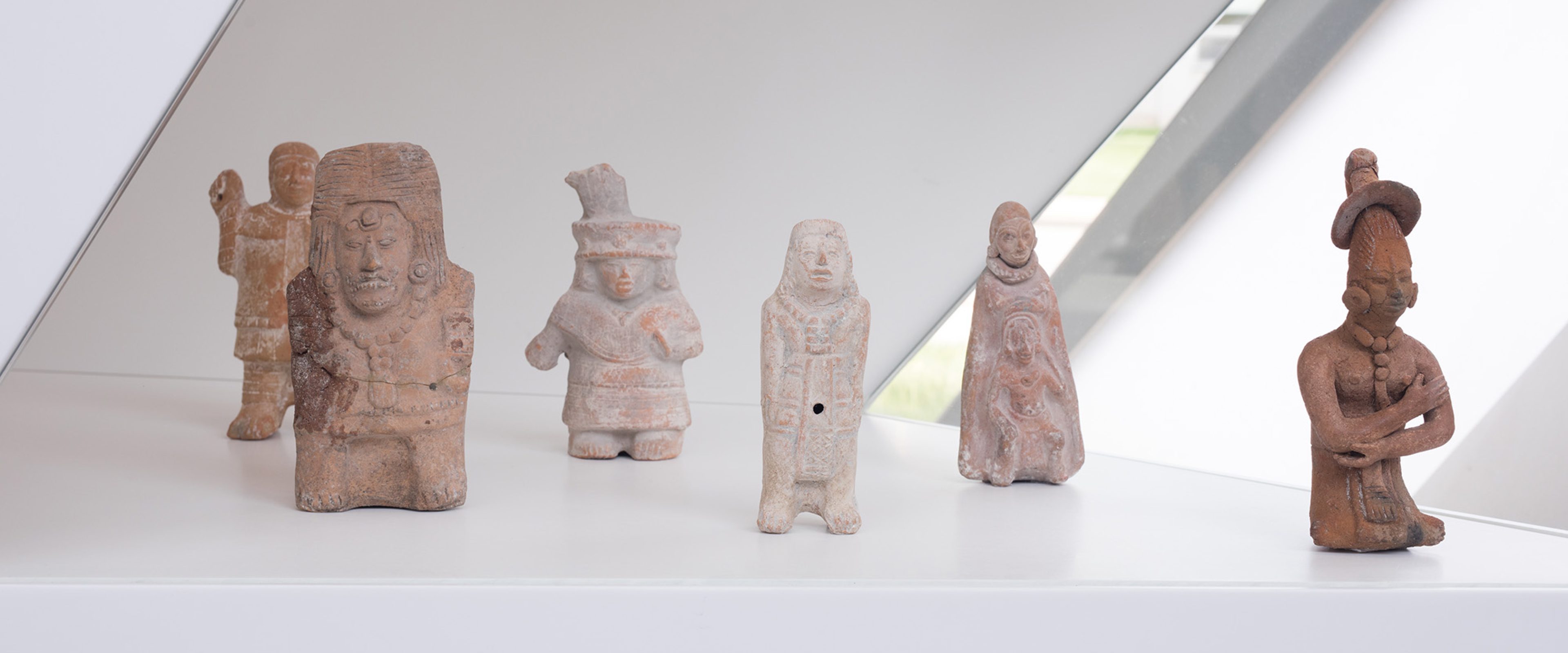Ancient Mayan Art is organized by the Eli and Edythe Broad Art Museum at Michigan State University and curated by Carla Acevedo-Yates, Associate Curator. Support for this exhibition is provided by the Alan and Rebecca Ross endowed exhibitions fund.
About the Exhibition
The Maya civilization developed a complex and sophisticated visual culture that included hieroglyphs, books, sculpture, and mural painting. Ancient Mayan Art features a selection of classic Mayan figurines from the MSU Broad collection, most of which are rattles used in burials and rituals or given as gifts. At the time these objects were made, approximately 700–900 AD, the Maya civilization had more than sixty kingdoms, each ruled by a k’uhul ajaw (divine lord) who competed for control of land, raw materials, and trade routes. For these cultures, art had a political and a religious function, and often the intense status rivalries between different city-states were manifested in their prolific and diverse artistic production.
The works on view tell stories about how the ancient Maya lived—their daily practices, rituals, and belief systems. Body modification, for instance, was common, and is evidenced in the figurines through representations of facial scarification, piercings, and elongated skulls, the latter a result of cranial manipulation. Notably, the priest figurine is represented alongside the rain god Tlaloc, a ubiquitous presence in both ancient and contemporary Mexican culture. This and other elements of the works remind us that, far from being conceptually far removed from our present time, these objects are part of the histories of living indigenous communities and still influence the work of artists living today.
